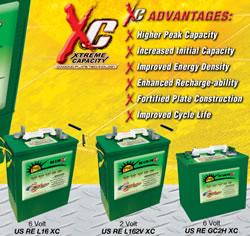Solar Energy in Oregon, Washington Projected to Make Big Gains
Powered by growing residential and commercial markets, the neighboring states of Oregon and Washington are set to make significant gains this year in new solar installations, according to the recently-released U.S. Solar Market Insight 2014 Year in Review. “In Washington, solar growth this year is projected to triple, while Oregon is expected to more than quadruple,” said Rhone Resch, president and CEO of the Solar Energy Industries Association (SEIA).
Washington, D.C. April 14, 2015
Powered by growing residential and commercial markets, the neighboring states of Oregon and Washington are set to make significant gains this year in new solar installations, according to the recently-released U.S. Solar Market Insight 2014 Year in Review. The two Northwest states are expected to top 200 megawatts (MW) of combined solar electric capacity by the end of 2015 - enough to power nearly 25,000 homes.
The report went on to point out that the biggest solar gains last year in both states came in residential installations, but commercial installations increased, too, with leading companies such as Walgreens, Kohls REI, Safeway and Intel all making significant investments in solar energy systems. But 2015 promises to be the best year ever for both states when it comes to adding new solar electric capacity.
"In Washington, solar growth this year is projected to triple, while Oregon is expected to more than quadruple. Thats pretty impressive growth," said Rhone Resch, president and CEO of the Solar Energy Industries Association (SEIA). " Today, more and more people, as well as business in both states, are choosing to ‘go solar as a way to reduce their electricity costs, make America more energy independent, protect our environment and fight climate change. Its a win-win for both states."
Today, there are 142 solar companies at work throughout the value chain in Oregon, employing more than 2,100 people. In Washington, there are 2,400 solar workers at 129 companies. These include manufacturers, contractors, installers, project developers and distributors, in addition to people working in financing, engineering and legal support.
Last year, the residential market in both states began to firmly take root, with installed system prices dropping by 8 percent - and down a total of 49 percent since 2010. Nationwide, the U.S. residential market added 1.2 GW of installed capacity in 2014, marking the first time that this growing sector surpassed 1 GW of clean, affordable solar. Residential also continues to be the fastest-growing market segment in the U.S., with 2014 marking three consecutive years of greater than 50 percent annual growth.
"Today, the U.S. solar industry employs 174,000 Americans nationwide - more than tech giants Apple, Google, Facebook and Twitter combined - and pumps nearly $18 billion a year into our economy," Resch added. "This remarkable growth is due, in large part, to smart and effective public policies, such as the solar Investment Tax Credit (ITC), Net Energy Metering (NEM) and Renewable Portfolio Standards (RPS). By any measurement, these policies are paying big dividends for the U.S., Oregon and Washington economies, as well as for our environment."
Featured Product

U.S. BATTERY RENEWABLE ENERGY SERIES DEEP CYCLE BATTERIES
Our RE Series batteries are designed to provide the highest peak capacity, longest cycle life, and greatest reliability for use in industrial or residential renewable energy applications. Renewable Energy Series batteries utilize the company's exclusive XC2™ formulation and Diamond Plate Technology® to create the industry's most efficient battery plates, delivering greater watt-hours per liter and watt-hours per kilogram than any other flooded lead-acid battery in the market. Our Deep Cycle batteries are engineered to work with solar panels as well as other renewable energy applications.
